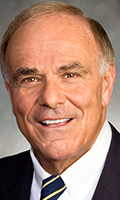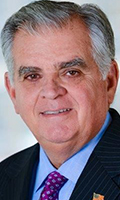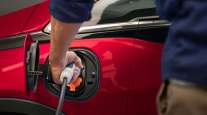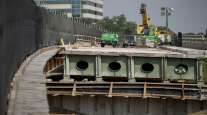Opinion: A Future for Highway Funding
The expansive infrastructure networks that were built in the 20th century have served our nation well. As America’s economy grew, people and goods continued to move across the country, and the quality of life for all our citizens continued to improve. But in recent years, our infrastructure has been neglected and underfunded as policymakers in Washington have ignored the decay and disrepair of our roads, bridges and transit systems.
For decades, America’s roads and bridges were paid for by the users of transportation systems through modest fuel taxes. The system worked well for years, but as vehicles became more fuel efficient and cars that use little or no fuel at all became more prevalent, less revenue from this user fee flowed into the Highway Trust Fund.

Rendell
Since 1993, the fuel tax rates of 24.4 cents per gallon for diesel and 18.4 cents per gallon for gasoline have not increased, and have due to inflation lost a good deal of their purchasing power. Congress has declined to take any action to approve even a modest increase in these rates or even index them to inflation.
Unfortunately, inaction has severe consequences. Since the Highway Trust Fund has not kept up with our nation’s growing needs, the result has been clear: Our roads are cratered with potholes, our bridges no longer handle growing traffic volume, and traffic congestion has grown to unbearable levels in many of our cities. And we are falling behind our global economic competitors. The World Economic Forum ranked our infrastructure No. 1 in the world in 2005, but after years of inaction we have fallen to No. 9 — a significant step back.
It’s time to forge a new path forward. Competing in the 21st century requires 21st century infrastructure and a 21st century way to pay for it.
Congress should look no further than the states that have been testing the feasibility of replacing the system that charges drivers by how much fuel they consume with how many miles they drive. States like Oregon and California have been at the forefront of this testing, and Washington, Colorado, Utah and Minnesota have also been exploring this concept.
A road user charge would address the growing fuel efficiency of vehicles while at the same time ensure that hybrid and electric vehicles that currently pay little or nothing contribute their fair share. In addition to generating needed revenue, such a program could also be used to better manage traffic congestion by using variable pricing based on time of day and traffic volume. Variable pricing is already widely used on highways around the country. The 495 Express Lanes in Northern Virginia, the I-15 Express Lanes near San Diego and 95 Express in Miami are three examples.

LaHood
Full-scale implementation of a national road user charge is several years away. In the interim, we must continue to rely on fuel taxes, but it is imperative that they be increased and indexed to inflation.
The Highway Trust Fund is projected to go bankrupt in 2020. If something isn’t done to increase funding — be it an increase in fuel taxes, transfers from the general fund of the treasury or something else — it will have a $138 billion shortfall over the next 10 years. And if that shortfall is addressed with an increase and indexing of the gas tax, there would be no impact on the federal deficit. This would not be the case if money is transferred from the general fund.
We believe this proposal is the bridge to the 21st century that is needed to get America’s infrastructure back to No. 1. It will require vision, courage and action from our policymakers.
With the close of the recent 6th annual Infrastructure Week, now is the time to act. The future won’t wait. Neither can we. It’s #TimeToBuild.
Ed Rendell is a former Pennsylvania governor. Ray LaHood is a former U.S. Secretary of Transportation.



